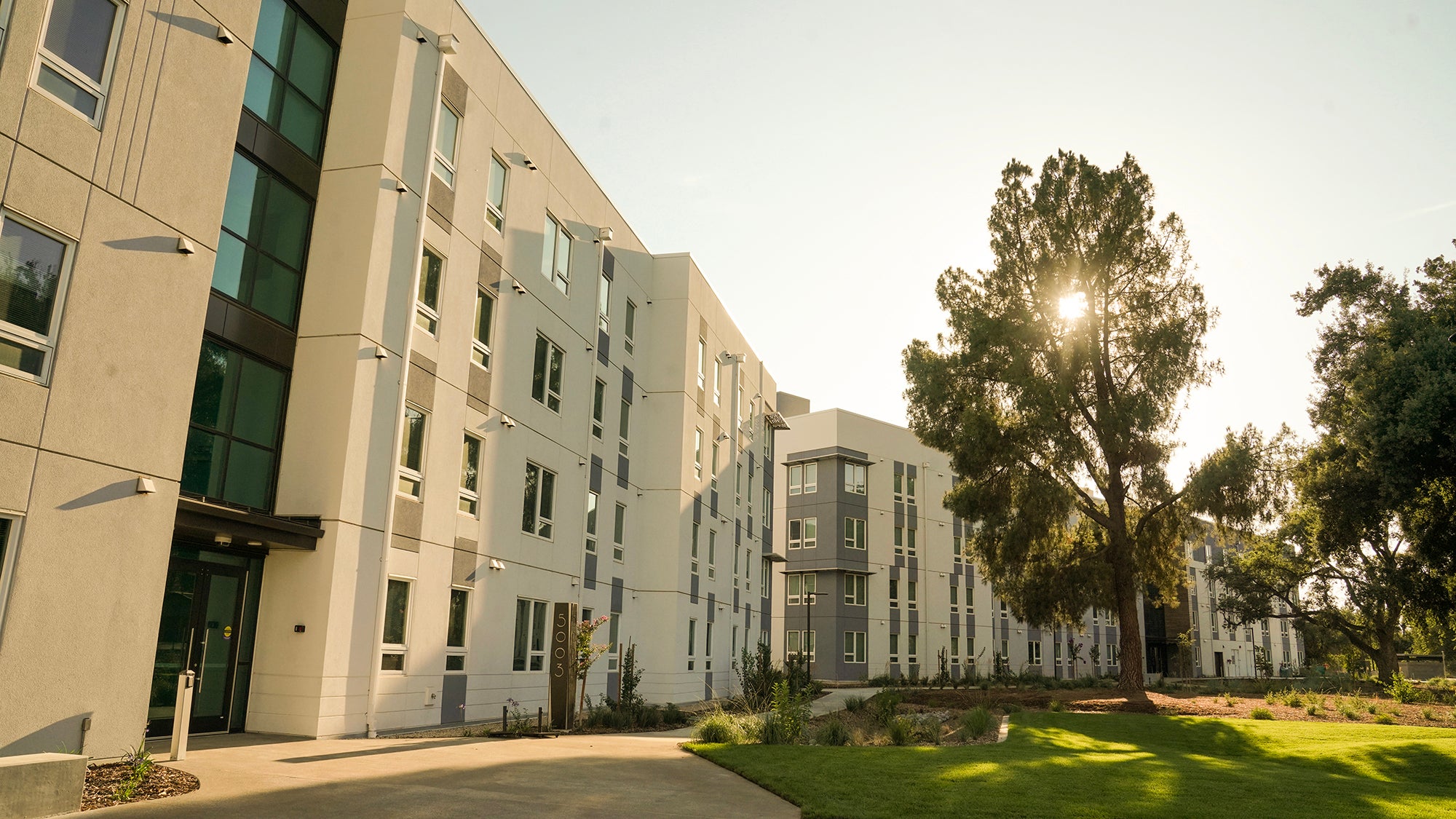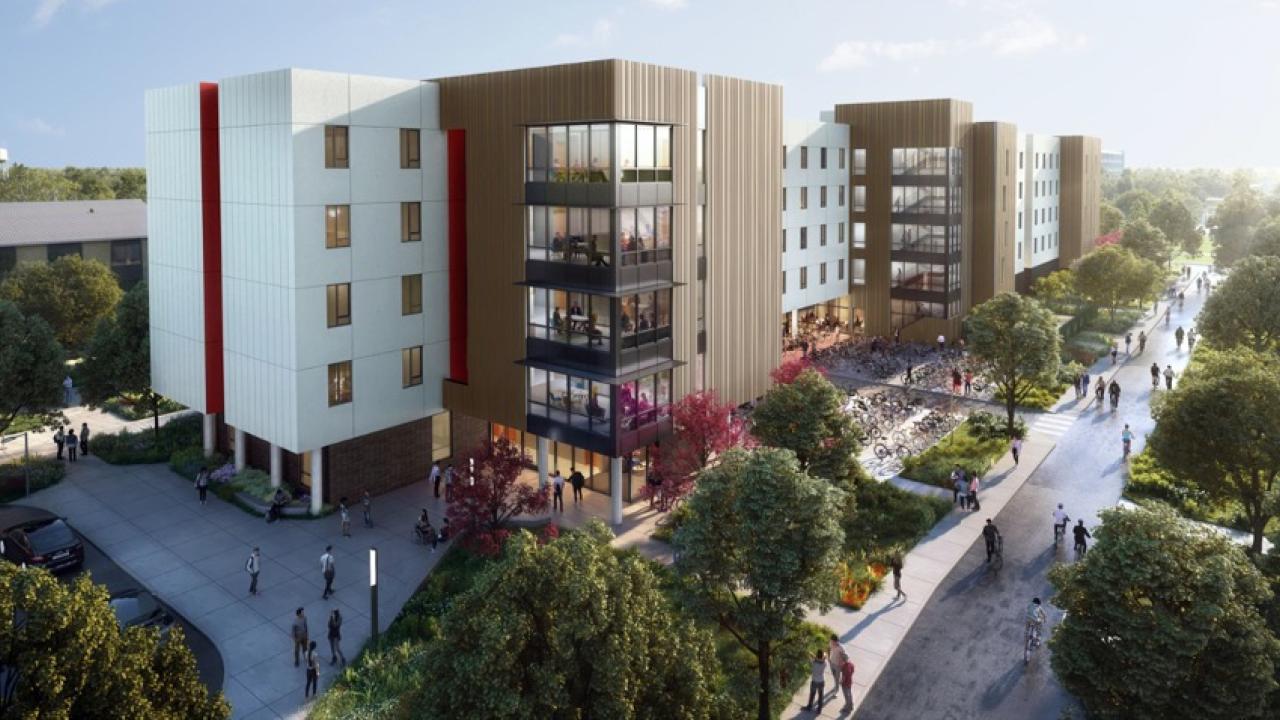As the University of California, Davis, continues a building program that has added thousands of student beds to campus in recent years, the apartment vacancy rate in the city of Davis continues to ease.
About 4% of market-rate apartments in Davis — including those leased by the unit and by the bed — were vacant in fall 2024, according to a survey report released today (Feb. 4). Rents increased by a combined average of 1.6%.
The results are from the fall 2024 version of UC Davis’ apartment vacancy- and rental-rate survey, conducted since at least 1975. The Office of Student Housing and Dining Services commissions the survey to provide the campus and surrounding communities with information to support planning.
The bended vacancy rate for the two unit types is one percentage point higher than last fall’s 3.0% percent and (except for fall 2020 when UC Davis planned for mostly remote instruction due to the COVID-19 pandemic) the highest since the blended vacancy rate was first reported in 2017.
The survey results follow seven years in which UC Davis has made a net gain of more than 6,260 new apartment and residence hall beds on campus. The city of Davis has also contributed to this positive impact with the approval of numerous new apartment projects.
“It is great to see the vacancy rate at a level that is considered healthy for a market and the stabilization of rent escalation,” said Michael Sheehan, associate vice chancellor for housing, dining and divisional operations in Student Affairs. “This is a direct result of the planning, hard work and partnership with the city.”
The campus is scheduled to break ground this spring on a new residence hall for occupancy in fall 2027. The Segundo Infill Project, approved by the UC Board of Regents last summer, is designed to accommodate about 500 students in double and triple occupancy configurations. The campus has also begun planning a new apartment project within the West Village neighborhood. The size and timeline are still being developed.
Campus housing and enrollment
In fall 2024, UC Davis housed 15,024 students and their family members on campus.
Since 2017, UC Davis has opened more than 6,260 new apartment and residence hall beds through construction of Orchard Park, the Tercero 4 complex, Yosemite Hall, The Green at West Village and Shasta Hall; and by doubling up beds in larger rooms at the Sol apartments in West Village.

The campus has met its 2023 target of having 15,000 student beds on campus under the terms of a 2018 memorandum of understanding with the city of Davis and Yolo County.
In 2016-17, about 29% of students lived on campus. It is estimated that 41% of Davis-based students are living on campus this academic year, and the campus is conducting preliminary planning for sufficient housing to accommodate 48% of students.
In fall 2024, UC Davis enrolled a total of 41,239 students, an increase of 0.9% from the previous fall’s 40,848. Some of these students participate in programs at facilities outside of Davis, such as the Sacramento campus and beyond.
UC Davis measures its Davis-based enrollment as an average over the three regular academic quarters for implementing its 2018 Long Range Development Plan, or LRDP, which has a projected capacity of 39,000 students for the Davis campus. The early estimate for the LRDP’s three-quarter enrollment average for the current academic year is about 36,500. Since 2019-20, the LRDP three-quarter average enrollment has remained below 37,000.
Rental rates
The combined average rental rate increased 1.6% from fall 2023 to $2,762.
The average monthly rent for unit-leased apartments of all sizes — from studios to four or more bedrooms — was up 2.2% to $2,425.
Two-bedroom apartments — representing 46% of those rented by unit — were shared by an average of three people and rented for $2,374, up 3.4% from fall 2023.
The average rate for a bed lease decreased 0.7% to $1,168.
Some complexes levy mandatory charges for utilities and parking.
Almost 30% of survey respondents reported decreasing rents in 2024, compared to 10% in 2023. Forty-three apartment complexes — more than twice as many as last year — reported offering incentives and move-in specials to help fill vacancies and attract new residents. The average value of these incentives was $2,320, or 48% over last year’s average and well above those of earlier years too.
Vacancies by unit type
The 6,763 apartments leased by the unit accounted for about 65% of the market-rate rental units in the survey. A total of 283 apartments, or 4.2%, were vacant and available for lease, compared with 152, or 2.3%, vacant among 6,668 apartments in fall 2023.
The number of apartments leased by the bed rather than the unit as a whole increased by 41%, from 2,611 in fall 2023 to 3,674 in fall 2024, augmented their number of beds by nearly a third and accounted for about 35% of the market-rate apartments in the survey. A total of 406, or 3.8%, of their 10,579 beds were vacant. In fall 2023, 5.9% of 7,988 beds in this type of unit were vacant.
About the survey
A total of 116 apartment complexes and property management companies representing 11,144 rental units, or 3.2% more units than the previous year, responded to the survey. Based on the American Community Survey’s estimates of multifamily housing units in the city of Davis and on campus, the units captured in the survey account for approximately 84.5% of the Davis area multifamily housing stock.
The report’s calculations excluded units rented at below-market rates, so only those 10,437 market-rate units were included.
Media Resources
Media Contacts
- Michael Sheehan, Student Affairs, mtsheehan@ucdavis.edu
- Julia Ann Easley, News and Media Relations, 530-219-4545, jaeasley@ucdavis.edu
